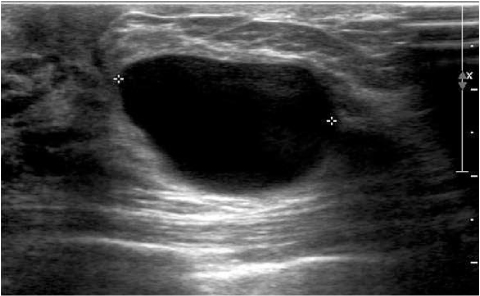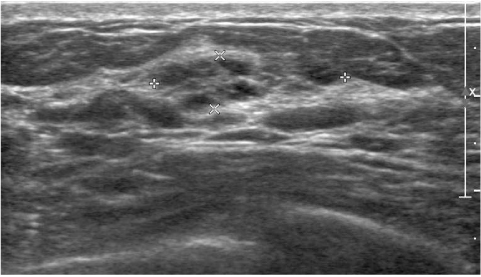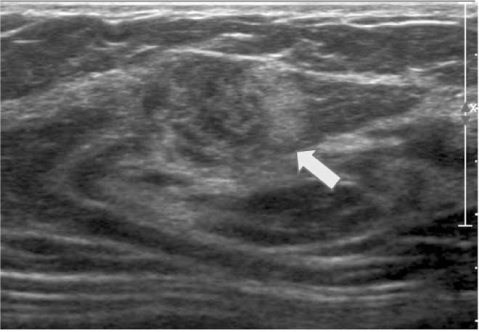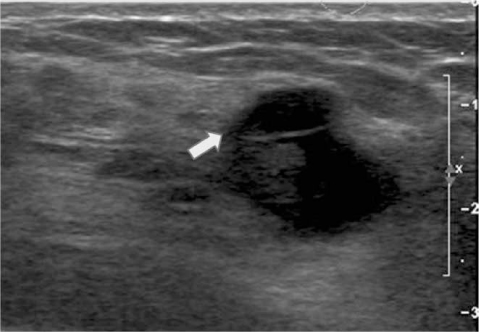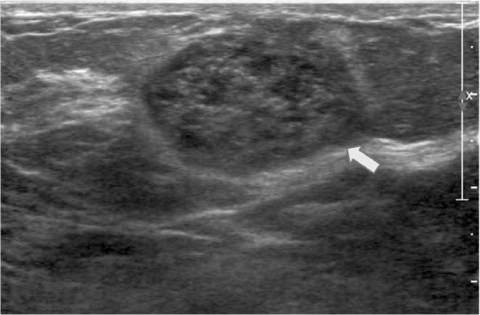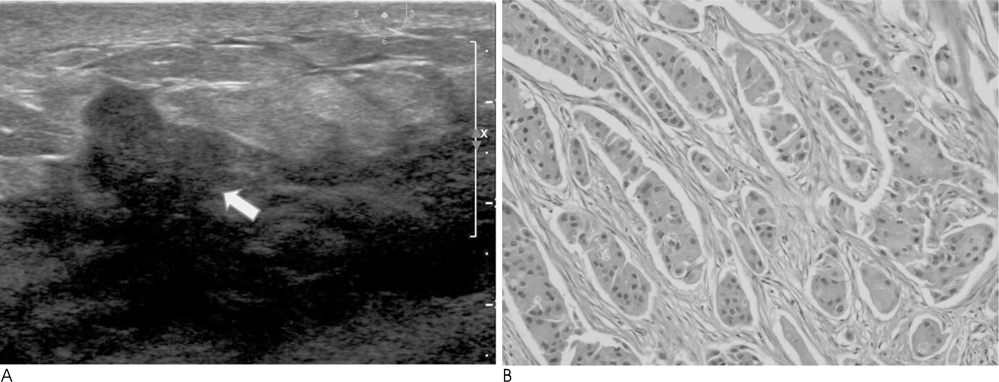J Korean Soc Radiol.
2010 Jan;62(1):81-85. 10.3348/jksr.2010.62.1.81.
Ultrasonographic Findings of Apocrine Lesions Arising from the Breast
- Affiliations
-
- 1Department of Radiology, Inha University College of Medicine, Inha University Hospital, Korea. kimyj@inha.ac.kr
- KMID: 2209000
- DOI: http://doi.org/10.3348/jksr.2010.62.1.81
Abstract
- A breast ultrasonography is the most frequently performed radiologic study along with the mammography. As in the mammography, breast ultrasonography renders the final evaluation by examining the shape, orientation, margin, border, echogenicity, patterns of the posterior shadowing, and changes of surrounding tissue of the breast mass according to BI-RADS (Breast Imaging Reporting and Data System). Apocrine proliferation of the breast is a common aging phenomenon, but the radiologic features are rarely reported. We described the radiologic features of breast apocrine lesions.
MeSH Terms
Figure
Reference
-
1. Trenkic S, Katic V, Pashalina M, Zivkovic V, Milentijevic M, Kostov M. The histologic spectrum of apocrine lesions of the breast. Arch Oncol. 2004; 12:61–65.2. Wells CA, El-Ayat GA. Non-operative breast pathology: apocrine lesions. J Clin Pathol. 2007; 60:1313–1320.3. Warner JK, Kumar D, Berg WA. Apocrine metaplasia: mammographic and sonographic appearances. AJR Am J Roentgenol. 1998; 170:1375–1379.4. Berg WA. Sonographically depicted breast clustered microcysts: is follow-up appropriate? AJR Am J Roentgenol. 2005; 185:952–959.5. O'Malley FP, Bane AL. The spectrum of apocrine lesions of the breast. Adv Anat Pathol. 2004; 11:1–9.6. Gill HK, Ioffe OB, Berg WA. When is a diagnosis of sclerosing adenosis acceptable at core biopsy? Radiology. 2003; 228:50–57.7. Zagorianakou P, Zagorianakou N, Stefanou D, Makrydimas G, Agnantis NJ. The enigmatic nature of apocrine breast lesions. Virchows Arch. 2006; 448:525–531.8. Leal C, Henrique R, Monteiro P, Lopes C, Bento MJ, De Sousa CP, et al. Apocrine ductal carcinoma in situ of the breast: histologic classification and expression of biologic markers. Hum Pathol. 2001; 32:487–493.9. Haagensen CD. Diseases of the breast. 3rd ed. Philadelphia: W.B. Saunders;1986. p. .10. Kopans DB, Nguyen PL, Koerner FC, White G, McCarthy KA, Hall DA, et al. Mixed form, diffusely scattered calcifications in breast cancer with apocrine features. Radiology. 1990; 177:807–811.
- Full Text Links
- Actions
-
Cited
- CITED
-
- Close
- Share
- Similar articles
-
- Apocrine Gland Carcinoma
- Apocrine Ductal Carcinoma In Situ of the Breast Presented Mass with Morphological Change on Follow-Up Ultrasound: A Report of Case
- The analysis of ultrasonographic findings in breast carcinoma
- Apocrine Carcinoma of the Breast: The report of 2 cases
- Malignant Apocrine Lesions of the Breast: Multimodality Imaging Findings and Biologic Features

